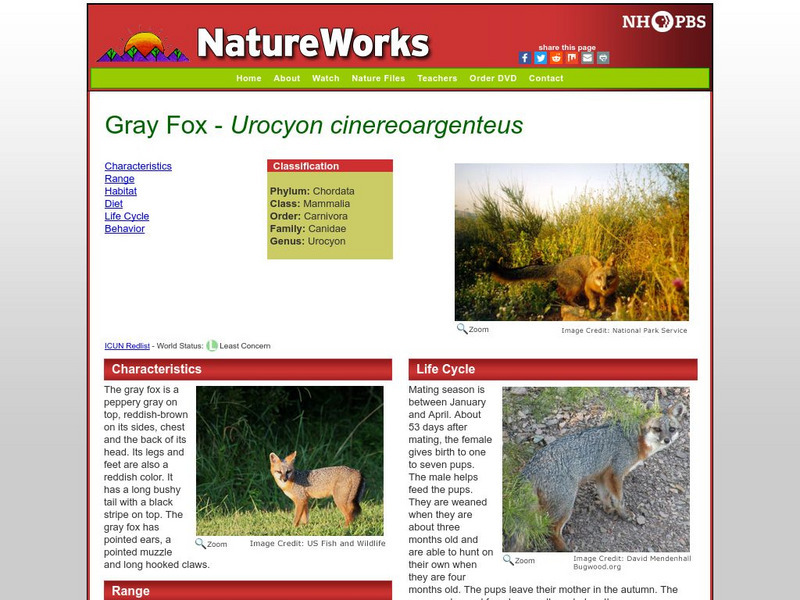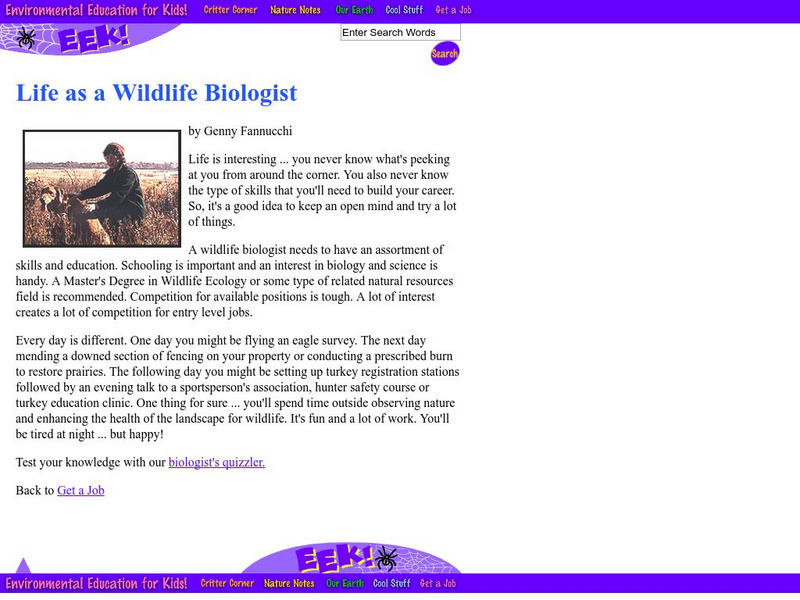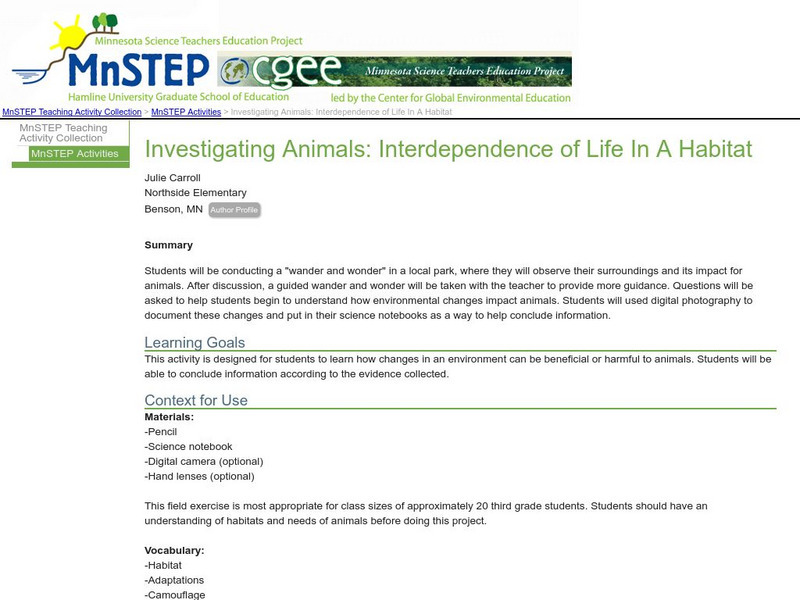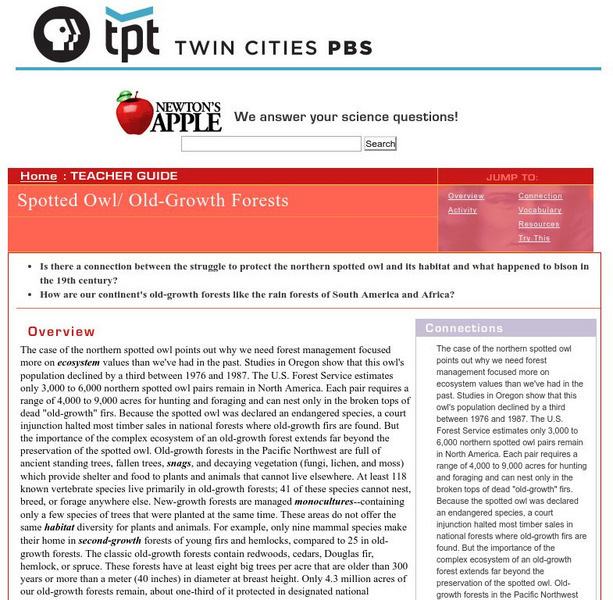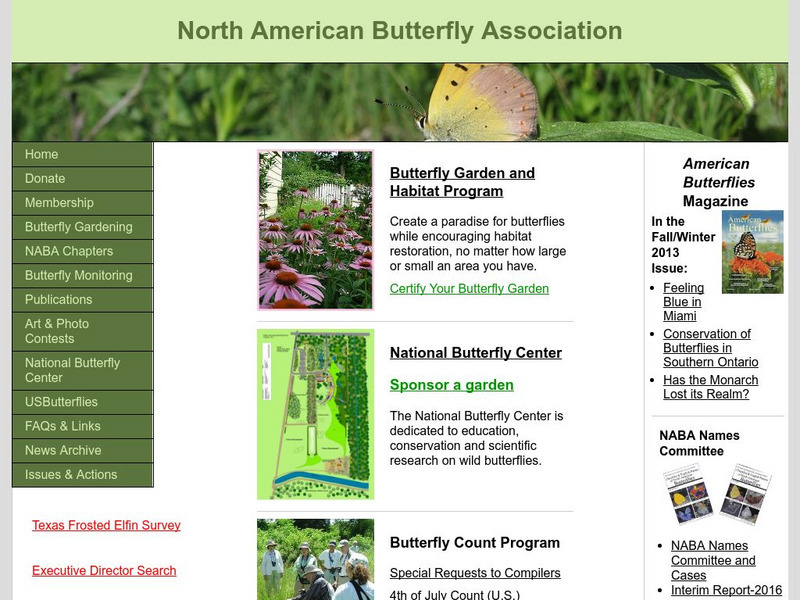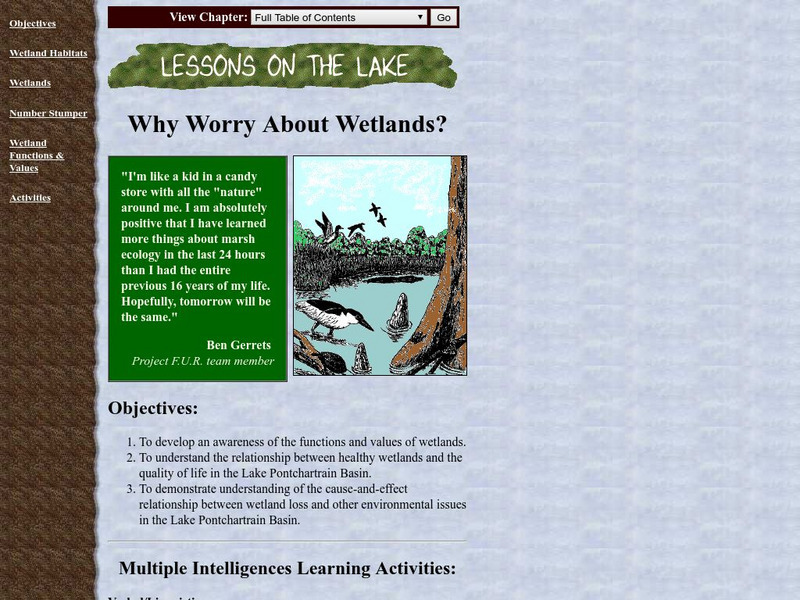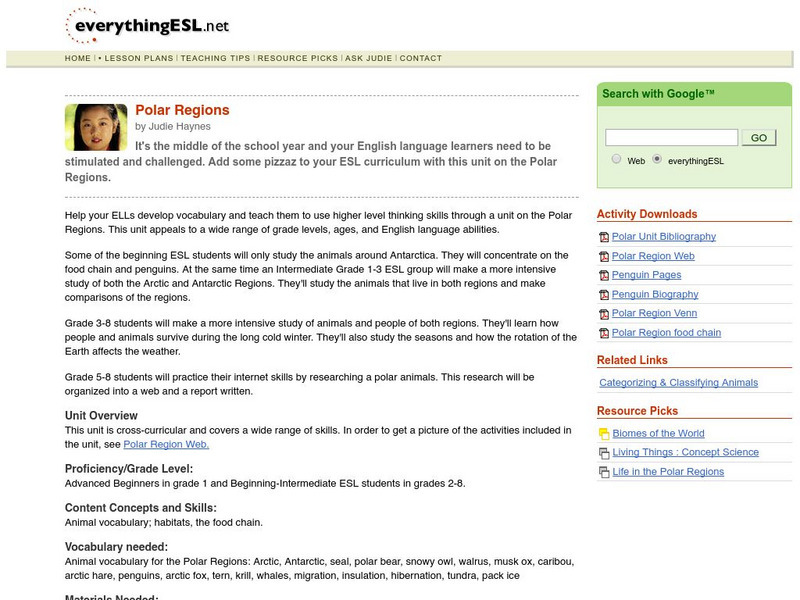E-learning for Kids
E Learning for Kids: Science: Australia: How Do Environments Affect Living Things?
Noah lives near the Great Barrier Reef. Go explore this diverse habitat with him.
E-learning for Kids
E Learning for Kids: Science: Caribbean Sea: Pirates: What Are Some Common Habitats?
Pete is shipwrecked and exploring environments around him. Want to join him as he learns about plant and animal habitats?
E-learning for Kids
E Learning for Kids: Science: Rio De Janeiro: Animals and Their Babies
Join Emma and the children's carnival parade. Visit the zoo, and have a good look at the animals.
Scholastic
Scholastic: Endangered Ecosystems: Build Your Own Caterpillar
As you build your own caterpillar, make sure it has everything it needs for its survival. Learn how characteristics, like color, spines, and glands, can help protect the caterpillar.
PBS
Nh Pbs: Nature Works: Gray Fox
What do you want to know about the gray fox? This site features information on this mammal's behavior, characteristics, diet, habitat, life cycle, and range. Come and learn more about this fascinating type of dog.
Environmental Education for Kids
Eek!: Life as a Wildlife Biologist
This site describes the skills needed for a career in Wildlife Biology. Includes link to a quiz that tests the student's knowledge of Wildlife issues.
Science Education Resource Center at Carleton College
Serc: Discovering Nature in Our Neighborhood: Investigating Natural Communities
Students examine the natural surroundings around the school and identify micro-communities of plants, insects, and other animals through walks and nature journaling.
Science Education Resource Center at Carleton College
Serc: Investigating Animals: Interdependence of Life in a Habitat
In this activity, students will learn how changes in nature can be beneficial or harmful to animals. At the end, students will be able to conclude information according to the evidence collected.
Writing Fix
Writing Fix: A Habitat for a Wild "Pet"
After observing and naming elements of an animal's habitat, and reading The Salamander Room by Anne Mazer, students write fictional stories about finding and caring for a wild animal. A printable graphic organizer, a teacher example, and...
PBS
Newton's Apple: Spotted Owls and Old Growth Forests
This site from Newton's Apple, which is a production of KTCA Twin Cities Public Television, provides insights, vocabulary, resources and a main activity on the subject of why owls are threatened.
Open Curriculum
Open Curriculum: Science of Ecology
This illustrated article helps students identify levels of organization in ecology.
PBS
Pbs Kids: Plum Landing: Marmot Manor: Mountain Mission
After watching the "Marmot Manor: Mountain Mission" episode of PBS Kids' Plum Landing, students will draw a picture of the marmot's underground mountain home.
PBS
Pbs Kids: Plum Landing: Pure Gold
Students will learn about golden eagles through reading and viewing an episode of Plum Landing. Then students will illustrate what they have learned about the golden eagle's environment.
PBS
Pbs Kids: Plum Landing: The Gray: Mountain Mission
After watching the "The Gray" episode of PBS Kids' Plum Landing, students will draw a picture of gray wolves that are traveling in a pack.
PBS
Pbs Kids: Wild Kratts: Creaturepedia
Discover cool facts about your favorite animals in the Wild Kratts database through interactive games and videos.
Other
Glover's Reef Marine Reserve
This Glover's Reef Marine Reserve site gives information one of Belize's marine reserves. It discusses all aspects of the reserve including why it is necessary and what types of wildlife and plants live there. This site offers links to...
Other
Cc: A Classification System for Mosquito Life Cycles
An in-depth discussion on the classification systems of mosquitos: discusses the classification of Bates and Pratt and proposes a new classification system.
Other
K 3 Learning Pages: Reptiles and Amphibians
Come and discover more about reptiles and amphibians when you explore this awesome resource. This site is filled with useful links.
Other
North American Butterfly Association
Visit a butterfly center or start your own butterfly garden with information from the North American Butterfly Association.
US Geological Survey
U.s. Geological Survey: Make a Birdhouse
Illustrated, step-by-step directions on how to build a birdhouse for a bluebird or other similar species.
US Geological Survey
Lake Pontchartrain Basin Foundation: Why Worry About Wetland?
Help students understand the functions and values of wetlands through these multiple intelligences learning activities. The site also includes information about the wetland habitats, commercial values, water quality, and erosion control.
Everything ESL
Animal Habitats: The Polar Regions
Stimulate and challenge your ESL young scholars with a unit on Polar regions. Students will use higher level thinking skills while learning about animals, habitats and food chains. You will find many downloadable pages.
McGraw Hill
Glencoe Biology: Terrestrial Biomes: Self Check Quiz
Try these five multiple-choice review questions over terrestrial biomes. A self-checking feature is available for students who seek further review.
Scholastic
Scholastic: Study Jams! Science: Ecosystems: Aquatic Ecosystems
A video and a short multiple-choice quiz on the topic of aquatic ecosystems. It discusses the difference between freshwater and saltwater ecosystems, then explains what the three ecozones are in a marine ecosystem.






